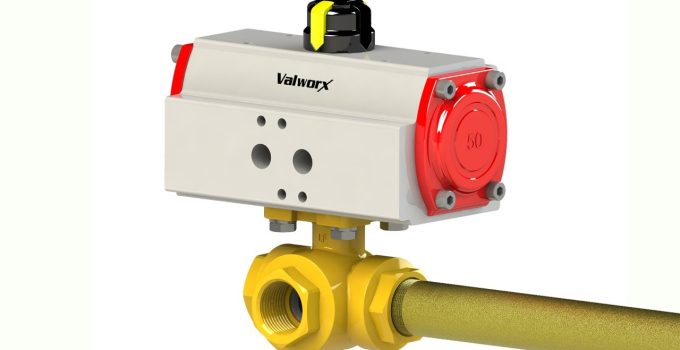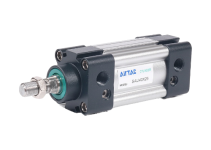In the world of industrial automation and control systems, actuators play a crucial role in converting energy into mechanical motion. With the growing demand for precision, reliability, and safety, pneumatic and manual combo actuators are becoming increasingly popular. This article discusses the fail-safe operation of these actuators, their unique features, their benefits, and various applications.
Understanding the Fundamentals of Pneumatic & Manual Combo Actuators
A pneumatic & manual combo actuator is a device that uses a compressed air system to generate motion and can be manually operated when needed. This combination of pneumatic and manual operation provides a versatile solution for various industrial applications. The pneumatic component of the actuator offers the advantage of automation, while the manual component serves as a fail-safe option in case of air supply failure.
These actuators are designed for a wide range of applications, including, but not limited to, the operation of valves in industries such as oil and gas, water treatment, chemical processing, and power generation. They are also used in applications requiring precise control and positioning, such as robotics and assembly lines.
Key Features of Pneumatic & Manual Combo Actuators
Pneumatic & manual combo actuators boast several features that make them an attractive choice for many industrial applications. First and foremost, they offer a high degree of reliability and precision. The pneumatic component of the actuator ensures consistent, repeatable operation, while the manual component provides a contingency plan in the event of air supply failure, thus offering a fail-safe operation.
Another key feature of these actuators is their robust construction. They are typically made of durable materials that can withstand harsh industrial environments. This robustness, coupled with their low maintenance requirements, contributes to their long service life.
Furthermore, pneumatic & manual combo actuators are energy-efficient. They utilize the energy stored in compressed air, which is a clean, readily available, and inexpensive energy source. This makes them an environmentally friendly choice for many industrial applications.
Benefits of Using Pneumatic & Manual Combo Actuators
One of the main benefits of using a pneumatic & manual combo actuator is its fail-safe operation. The manual component of the actuator can be engaged in the event of an air supply failure, ensuring that critical operations can continue unhindered. This redundancy is particularly important in industries where downtime can result in significant financial losses or safety risks.
Another benefit of using these actuators is their energy efficiency. As mentioned earlier, they utilize compressed air as an energy source, which is both cost-effective and environmentally friendly. This can result in significant cost savings over the lifespan of the actuator.
Finally, pneumatic & manual combo actuators are easy to install and operate. The pneumatic component of the actuator can be easily integrated into existing control systems, while the manual component requires no special training to operate. This ease of use makes them an attractive option for many industrial applications.
Applications of Pneumatic & Manual Combo Actuators
Pneumatic & manual combo actuators have a wide range of applications across various industries. In the oil and gas industry, for instance, they are used to control valves that regulate the flow of fluids. The pneumatic component of the actuator provides automated operation, while the manual component serves as a backup in case of air supply failure.
In the field of water treatment, these actuators are used to operate valves that control the flow of water and other fluids. The air & manual combination actuator allows for precise control of the valves, ensuring that the treatment process is carried out efficiently and effectively.
These actuators are also used in the power generation industry to control valves in power plants. The fail-safe operation of these actuators ensures that the power generation process can continue uninterrupted, even in the event of an air supply failure.
Conclusion
Pneumatic & manual combo actuators are a versatile, reliable, and cost-effective solution for various industrial applications. Their fail-safe operation, energy efficiency, and ease of use make them an attractive choice for many industries. By understanding the fundamentals of these actuators, their key features, benefits, and applications, businesses can make informed decisions about their use in their operations.
FAQs
What is a pneumatic & manual combo actuator?
A pneumatic & manual combo actuator is a device that uses a compressed air system to generate motion and can be manually operated when needed. This combination of pneumatic and manual operation provides a versatile solution for various industrial applications.
What are the benefits of using a pneumatic & manual combo actuator?
The main benefits of using a pneumatic & manual combo actuator are its fail-safe operation, energy efficiency, and ease of use. The manual component of the actuator can be engaged in the event of an air supply failure, ensuring that critical operations can continue unhindered.
What are some applications of pneumatic & manual combo actuators?
Pneumatic & manual combo actuators have a wide range of applications across various industries, including oil and gas, water treatment, and power generation. They are used to control valves that regulate the flow of fluids and gases, ensuring efficient and effective operation.



